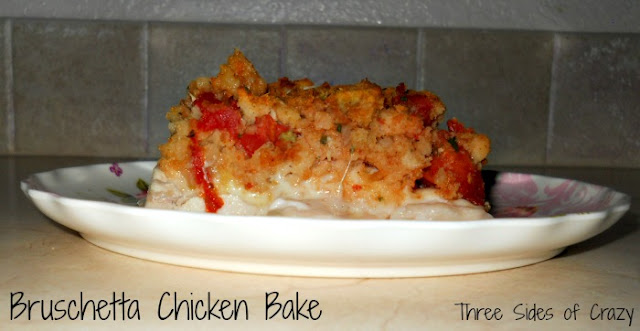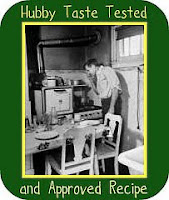3 cups all purpose flour+ more for dusting the work table
3.5 tablespoon unsalted butter
1 1/4cup + 1/2 tablespoon (2 sticks and little more than a ½ stick) unsalted butter (if you can find European style butter like plugra that will be good)
- First day makes dough
- 30 minutes before dough preparation, take 50 g butter and eggs out of the refrigerator allowing each to reach room temperature. If using fresh yeast, mix with room temperature milk beforehand to activate yeast.
- Combine the dry ingredients —flour, salt, sugar, instant yeast (if using) — in the bowl of a stand mixer.
-
IF USING ACTIVE YEAST, heat half milk to Luke warm (around 110F , 43C) and add yeast and. Otherwise heat milk to microwave for high for 30 seconds and add butter that way butter melts well.
- Then to the dry mixture add butter and milk mixture and the eggs. Mix on low speed for 3 minutes, or until everything is incorporated. Mix on higher speed for another 8 minutes. Mix on higher speed for another 8 minutes. If you kneading with your hand make sure to knead well for about 10-15 minutes or until you get smooth shiny dough.
- Remove the dough and tuck under edges to form a ball. Coat a bowl with PAM or any oil of your choice and place the dough in it with seams down. Use a knife to cut a cross into top surface (this will help the dough relax). Cover tightly with clear plastic wrap, making sure it is in contact with the dough.
- Place dough in a warm area and allow it to double in size. This should take 60 minutes. Once dough has “poofed, or double in size ” transfer to refrigerator to overnight.
- Second day start incorporating butter into the dough
- Cut the cold butter lengthwise into 1/2-inch-thick slabs.
- Arrange the pieces on a piece of parchment or waxed paper to form a 5 to 6 inch square, cutting the butter crosswise as necessary to fit. Top with another piece of parchment or waxed paper.
- With a rolling pin, pound the butter with light, even strokes. As the pieces begin to adhere, use more force.
- Pound the butter until it’s about 4 x 6 inches square and then trim the edges of the butter.
- Put the trimmings on top of the square and pound them in lightly with the rolling pin.
- Place in refrigerator to cool for at least 2 hours.
-
Laminate the dough
- Unwrap and lay the dough on a lightly floured work surface. Roll into a 10-1/2-inch square. Brush excess flour off the dough. Remove the butter from the refrigerator. If not, refrigerate a bit longer. Unwrap and place the butter on the dough so that the points of the butter square are centered along the sides of the dough. Fold one flap of dough over the butter toward you, stretching it slightly so that the point just reaches the center of the butter. Repeat with the other flaps. Then press the edges together to completely seal the butter inside the dough. (A complete seal ensures butter won’t escape.).
- 1st Turn. Lightly flour the top and bottom of the dough. With the rolling pin, firmly press the dough to elongate it slightly and then begin rolling instead of pressing, focusing on lengthening rather than widening the dough and keeping the edges straight. Turn the dough so that a shorter end faces you. Roll to expand the length of the dough, making sure that the dough doesn’t stick to the table. Add flour if needed. When you have a rectangle about 21 x 9 inches, fold the top third of the rectangle down and fold the bottom third up to cover it. Turn the dough 90 degrees so that the opening resembles a book.
- 2nd Turn. Try to do this turn right away, but if the dough is too warm, wrap in film and place in the refrigerator until it cools. Repeat rolling, just like the first turn, then turn 90 degrees and gently press two fingers into the lower right corner to mark the number of turns. (Marking the dough allows you to track your progress, and ensure that the orientation of the dough is correct when you remove it from the refrigerator.) Cover the dough in a parchment paper and then again with plastic wrap and refrigerate for at least 1 hour.
- 3rd Turn. The dough will be hard, so gently pound the dough to warm the butter. If it is too cold the butter will separate and not spread as it should. Repeat the previous steps, and turn again, marking the corner with three fingerprints. Cover dough with parchment paper and plastic wrap and refrigerate for 1 hour.
- 4th Turn. Make the final turn, repeating the steps from turns 1-3. Refrigerate overnight
- Third day Fry the dough
- Rolling out the Dough. Lightly dust a work surface with flour and roll out the dough to approximately the size of a sheet pan, 1/2 inch thick. Make sure the dough stays cold, without sticking to the surface. If it starts to stick, place in the refrigerator and roll again when cool. Transfer to a sheet pan with parchment paper, film and chill before use.
- Punching out cronuts. Prepare a sheet pan with parchment paper, sprayed with PAM or oil . Remove dough from fridge and take two ring molds, approximately outer molds should be 3 ½ inch and inner should be 1 ½ inch. ( use you peanut bottle cap for outer mold and prescription medication bottle for inner ones) Only start punching if the dough is very cold. Otherwise, your Kronut won’t fry straight.
- Transfer half of the punched kronuts to the sheet pan, leaving room for kronuts to “poof.”
- Brush tops of the Kronut with water and set aside. Place Kronut holes on the same sheet tray, leaving enough space for them to poof without sticking to each other. Leave in a warm area until they have proofed, about 30 min.
- Once it is proofed keep it in the refrigerator for 1 hour or in the freezer for 15 minutes before frying.
- Frying cronuts. Heat canola oil in a pot, about 3 inches high. Test oil with a pinch of flour: if flour foams it is ready for deep frying. Turn heat to low and place Kronuts in oil, 1-2 at a time, in order to avoid overcrowding the pot. Turn and flip Kronuts often so that they brown evenly.
- Once golden brown throughout, test one to see if it is cooked all the way through. Remove and place on paper towels.
- Now is a good time to prepare the Glaze
- Don’t over work with dough with too much kneading.
- Don’t over work with butter, if butter starts to leaking, try to put it back in the refrigerator.
- Flour the area well so that dough won’t stick.
- Heat oil in medium temperature and fry the kronuts in low temperature otherwise outside become too dark soon and inside won’t cook properly.
- In a medium-sized saucepan, stir together 2 1/2 cups of the milk, the sugar, salt, and the vanilla bean. (If you’re using vanilla extract or Vanilla Crush, add it at the end.) Bring to a simmer over medium heat, stirring to dissolve the sugar.
- Meanwhile, whisk the cornstarch, flour, and egg yolks with the remaining 1/2 cup milk.
- Whisk some of the hot milk mixture with the egg yolks to temper them. This keeps the yolks from turning to scrambled eggs when you add them to the simmering milk.
- Pour the egg/milk mixture back into the remaining simmering milk. Doing this through a strainer will help prevent lumps later. Bring to a boil, stirring constantly with a whisk, until the mixture thickens.
- Remove from the heat and strain through a fine sieve. Stir in the butter and vanilla extract (if you’re using it). If you’re going to flavor the pastry cream with chocolate or some other flavor, this is the time to do it (see variations below).
- Rub a piece of butter over the surface of the cream, top with a piece of plastic wrap (make sure it touches the top of the pastry cream so it doesn’t develop a skin), then refrigerate until cool.
- To complete, fold the whipped cream into the cooled pastry cream.
3 ounces semisweet chocolate chips
- To make the vanilla glaze: Stir the ingredients together, adding extra liquid or confectioners’ sugar to adjust the consistency as needed. Yield: about 1/2 cup glaze.
- To make chocolate glaze: Melt the ingredients together over low heat or in the microwave, stirring often. Add extra corn syrup if needed to make a smooth, shiny glaze. Yield: about 1/2 cup glaze.
- To make apple cider glaze: Stir all of the ingredients together, adding additional sugar or cream if needed to make the glaze the consistency of molasses. Dip top of doughnuts in glaze, or drizzle glaze over doughnuts. Yield: about 1/2 cup glaze.
- Once doughnut is no longer shiny, transfer it to a container with sugar and cinnamon and toss.
















